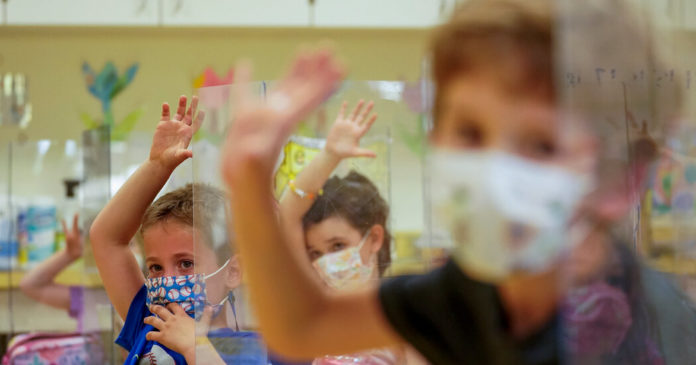The Centers for Disease Control and Prevention released new guidance for schools on Friday, urging them to fully reopen and calling on local districts to tailor their public health measures to local coronavirus data.
The recommendations signal a change from the C.D.C.’s past guidelines for schools and arrive less than a month before the first day of school for some districts.
Here’s what we know.
“Layered” prevention strategies
The new guidance continues to recommend that students be spaced at least three feet apart, but schools can rely on combining other strategies, like indoor masking, testing and enhanced ventilation, if such spacing would prevent them from fully reopening.
The guidance suggests masks for all unvaccinated students, teachers or staff members.
The guidance relies greatly on the concept of “layered” prevention, or using multiple strategies at once, like regular screening testing, improving ventilation, promoting hand washing and contact tracing combined with isolation or quarantine, in addition to social distancing and masking.
It also strongly urges schools to promote vaccination, which it called “one of the most critical strategies to help schools safely resume full operations.” But a vaccine has not been authorized for children younger than 12, so a large percentage of students would not be protected from the virus in that manner. As of Friday, 55.9 percent of those 12 and older across the country were fully vaccinated, according to federal data.
A more local approach
The issue of school closures has been contentious and divisive since the pandemic began, and advising school districts has been fraught for the C.D.C. The updated guidance acknowledges that a uniform approach to regulating schools is not useful when virus caseloads and vaccination rates vary so greatly, and suggests that local officials decide on the best precautions for their schools.
In order to do so effectively those officials should closely monitor the virus in their areas, and if districts choose to remove prevention strategies they should remove one at a time, monitoring for any increases in Covid-19, the recommendations say.
The virus and children
Though there are far fewer cases overall than during the winter peak, children have increasingly made up a greater proportion of cases as the pandemic has gone on and, recently, as more adults have been vaccinated.
Serious illnesses and death among children have been rare, and young children are also less likely to transmit the virus to others than are teens and adults. But scientists are concerned about an inflammatory syndrome that can emerge in children weeks after they contract the virus, even those who were not symptomatic when they were infected, and some children experience lingering symptoms often known as long Covid.
Source : Nytimes











